- Home
- UFAI in the News
- UFAI Medical Journals
- Arthrodesis Treatments for Calcaneal Fractures
Arthrodesis Treatments for Calcaneal Fractures
- Published 2/26/2004
- Last Reviewed 2/26/2004
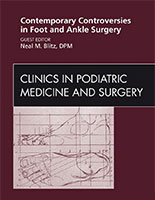
Written by Bob Baravarian, DPM
A great deal of improvement has been made in the treatment of calcaneal fractures in recent years; however, residual pain from calcaneal fractures is a challenging problem to the foot and ankle surgeon for which there has been no good solution. Patients often present with chronic rearfoot pain and deformity that result in residual symptoms that stem from the initial injury. Several investigators noted the complicating factors of poorly treated or neglected calcaneal fractures [1–3]. The main cause of complications is arthrosis that results from poor articular realignment. Secondary factors include loss of calcaneal height, varus heel position, increase in calcaneal width, and a decrease in talar declination. The as- sociated symptoms include calcaneo-fibular abutment that results in peroneal and sural nerve impingement, difficulty with accommodation due to varus heel po- sition, and early contact of the talar neck and the anterior tibia that causes anterior ankle impingement [1–3]. This article presents the results of 12 cases of calcaneal fracture. Seven cases of failed open reduction and five cases of conservatively treated calcaneal fractures were treated with block distraction subtalar arthrodesis. Although orthopedic publications have presented results of block distraction arthrodesis, this is the first such report in the podiatric literature.
Surgical Technique
A lateral decubitus or prone position may be used to access the subtalar joint. In cases of neglected fractures, a prone position and posterolateral incision is used. In cases of poorly-treated fractures where hardware removal is necessary, a lateral decubitus position is used. After the subtalar joint is opened, a complete debridement of any remaining articular cartilage and debris is performed and hardware is removed.
If a posterolateral incision is used, it is critical to check under fluoroscopic guidance that the ankle joint has not been entered instead of the subtalar joint. Following debridement of the articular surfaces, a laminar spreader is used to spread the talocalcaneal joint until adequate position and angular realignment is noted. The tibio-talo-calcaneal position and the amount of bone that is necessary to fill the defect are checked through the use of fluoroscopy. Bone graft may be harvested from the iliac crest or fashioned from a tricortical section of allograft.
If two pieces of bone graft are used, the pin from a large fragment cannulated screw set is placed in the center of the heel through a retrograde fashion before placement of the bone graft. The bone graft is placed in the subtalar joint and the position of the rearfoot is checked under fluoroscopic control. It is critical to check the foot position through the use of a calcaneal axial view to avoid over or undercorrection in a varus or valgus position.
A large cannulated screw is placed in a retrograde approach through the calcaneus and is used to stabilize the posterior subtalar joint. Caution should be used not to overcompress the fusion site which can result in reabsorption or depression of the graft material. If there is any concern of poor bone stock, a nonlagged fully- threaded screw is used to prevent any compression or depression of the bone graft. A second screw is placed to prevent rotation of the talus and calcaneus. The patient is placed in a bivalved nonweight-bearing cast following the procedure.
At 1 week, depending on level of edema, the patient is placed in a below-the- knee cast and is seen on a regular basis for follow-up. Serial radiographs are taken to determine the progress of the fusion site. It is essential to keep the patient nonweight bearing and realize that it often takes an extra month to see complete fusion compared with a subtalar fusion without bone grafting. Therefore, progression to weight bearing should be gradual and tempered until radiographic consolidation is noted.
Materials and Methods
Twelve patients underwent block distraction subtalar arthrodesis with tricorti- cal interpositional bone grafting for prolonged pain of the hindfoot due to a history of calcaneal fracture. Seven patients had a history of open reduction and internal fixation of an intra-articular calcaneal fracture with residual symptoms. Five patients had conservatively-treated calcaneal fractures with residual pain of the hindfoot. All of the previously-treated cases had depression of the posterior facet of the calcaneus and poor rearfoot height. A protocol was established based on the American Orthopedic Foot and Ankle Society (AOFAS) guidelines to assess results [4]. All patients were followed for at least 18 months before inclusion in the study.
Because of the need for hardware removal, a lateral incision was used in the seven previously-treated fractures. A posterolateral incision was used in the five cases of untreated calcaneal fracture. Iliac crest grafting was performed in four cases–three open reduction cases and one neglected fracture case. The remainder of cases used allogenic tricortical bone graft that was modeled to fit into the desired location
Following surgery, patients were seen at 1 week for wound check, then 3 and 6 weeks for radiographic and patient examination. At 6 to 7 weeks, the below- the-knee cast was changed to a below-the-knee walking boot and all patients began partial weight bearing with crutches and placed 25% of their weight on the surgical lower extremity. Subsequent radiographic follow-up was performed at 2-week intervals until arthrodesis was seen. Following radiographic visualization of arthrodesis, the patient was progressed to full weight bearing in the below- the- knee boot for an additional week before progression into regular shoes.
A chart review, radiograph review, and patient questionnaire were used to gather data. Radiographic analysis of hindfoot height, calcaneal inclination angle, and talar declination angle were analyzed using standard lateral radiographs to compare pre- and postoperative position. The AOFAS hindfoot-ankle scoring system was used to correlate data. All patients were checked for pain, activity limitations, maximum walking distance, ability to ambulate on differing walking surfaces, noted gait abnormality, sagittal motion, hindfoot motion, hindfoot stability, and alignment. Although this scoring system is based on a 100-point scale, only 94 points are possible in this study because of arthrodesis of the subtalar joint which results in lack of hindfoot motion.
Results
The calculated results show positive outcomes for our patient population. The average overall score according to the AOFAS ankle-hindfoot scale improved by 46 points. The greatest increase in score was related to pain. A significant decrease in pain was noted in our study group. Of the 12 cases in the study, 2 patients related mild or occasional pain with increased levels of activity. Both patients were placed in orthotic devices and felt improvement during normal ambulatory activity. One patient had moderate daily pain. This procedure was considered a failure because of inadequate bone graft size and poor bone graft positioning. Although this patient had pain on a daily basis, he was more comfortable after surgery and related no desire for further surgical intervention.
Functional improvement was dramatically improved also. Three patients felt no limitation of activity, whereas one patient felt limitation of daily and rec- reational activity. The remaining eight cases had no limitation of daily activity, but felt occasional limitation related to recreational activity. Related to functional activity, preoperatively, two patients required the use of a brace and two patients required the use of a cane. Postoperatively, no patients required the use of a brace or cane. Preoperative or postoperative orthotics were not considered as assistive devices; patients were placed in orthotics after surgery to add support and cushioning to the entire foot.
Only one patient could not walk at least six blocks before pain. Three patients had an obvious limp with ambulation; however, these patients had a significant limp before surgical correction and it is believed that two of the patients had a limp that was related to other lower extremity complications that were unrelated to our surgical procedure. Sagittal motion and hindfoot stability also improved postoperatively. All patients related improvement in ankle range of motion due to realignment of the talus to the tibia. Hindfoot stability was improved due to the arthrodesis of the subtalar joint.
The alignment of the rearfoot was excellent with a rectus to slight valgus fusion position in all but one patient. Care was taken not to place any patient in a varus position; however, one patient had continued pain related to the lack of proper height correction which led to a fair result of ankle-hindfoot alignment.
Complications were significant in only one patient. This patient was one of the first patients to have block distraction surgery in our study. Although at the time of surgery, it was believed that adequate correction had been achieved, the block of bone used was too small for proper rearfoot realignment. Furthermore, there was some reabsorption of the bone graft which led to further malalignment of the rearfoot. This patient had mild pain on a daily basis and difficulty with prolonged ambulation; the subtalar arthrodesis left him with a nonpainful joint and de- creased pain when compared with preoperative levels. Therefore, he did not feel the need for further surgical correction.
No case of nonunion, delayed union, or infection was noted. Allogenic bone graft was used in eight cases, whereas four cases had an iliac crest graft. There was no noted difference in the healing time between allogenic and iliac crest grafts. No cases of varus position were noted postoperatively. A calcaneal axial view preoperatively was used to judge the degree of varus position before reconstruction. Intraoperative fluoroscopy was used to check calcaneal axial views and assure proper positioning before permanent fixation placement. Average healing time was 10 weeks with a range of 9 to 11 weeks. All patients began guarded ambulation in a below-the-knee walking cast with crutches and placed 25% of their weight on the surgical foot at 6 to 7 weeks after surgery. Full unguarded ambulation was not initiated until radiographic signs of fusion was noted.
Discussion
Nonoperative treatment of calcaneal fractures is not well-accepted. Lindsay and Dewar [5] showed that patients who were treated nonoperatively for calcaneal fractures had resultant ankle pain in 27% of cases, lateral malleolar impingement and pain in 41% of cases, heel pain in 27% of cases, and lack of dorsiflexion to neutral in 20% of cases. As a result, open reduction and internal fixation of calcaneal fractures is now standard practice.
Several orthopedic articles have noted corrective subtalar fusion using a block of tricortical bone graft to restore hindfoot position and reduce symptoms [1–3, 6–11]. Carr et al [3] were the first to describe block distraction subtalar fusion through a posterior approach. Distraction of the talocalcaneal joint was accomplished through the use of a femoral distracter. Following positioning of the bone graft and rearfoot in the desired position, rigid internal fixation was used. Postoperatively, Carr et al noted a restoration of heel height, functional length to the gastrocnemius-soleus complex, and tibiotalar and talocalcaneal relationships and decompression of the peroneal tendons.
The largest study that involved block distraction subtalar arthrodesis was published by Bednarz et al [12]; it involved twenty-nine feet. The investigators noted a mean change in the AOFAS hindfoot and ankle score of 50 points when preoperative and postoperative levels were compared. Two cases of residual varus malunion were noted, both of which were corrected with calcaneal osteotomy procedures. Amendola and Lammens [1] presented results on 15 patients; they noted that 11 patients were satisfied with their results. The other four patients had continued pain with associated factors, including transverse tarsal arthritis, overcorrection, and one case of reflex sympathetic dystrophy that was present before surgery and had not responded to conservative treatment. Results of 10 block distractions were presented by Chan and Alexander [2]. They noted that 7 patients were satisfied with their results; 2 patients were satisfied with reservation because of persistent hindfoot pain. One surgical failure was noted with sinking of the bone graft into an osteopenic calcaneus. The investigators modified their technique from using one large bone graft to two smaller bone grafts to prevent complete graft collapse.
Several critical factors are needed to have successful outcomes with block distraction arthrodesis of the subtalar joint. Of critical importance is the proper assessment of bone graft size. The bone graft must be judged at the time of surgery while the desired position of the talocalcaneal angle is held with a laminar spreader. If the bone graft is not large enough, the surgical procedure is doomed to failure because of continued peroneal and anterior ankle impingement syndromes.
A second point of concern is varus-valgus angulation of the calcaneus fol- lowing arthrodesis. This can be judged using a preoperative calcaneal axial radiograph to guide with arthrodesis positioning. Also, an intraoperative calcaneal axial radiograph or fluoroscopic examination will decrease the chance of abnormal positioning. Ultimately, the goal of the arthrodesis is to place the heel in a rectus to slight valgus position.
Finally, in those patients who require a posterolateral approach to the subtalar joint, it is essential to check the position of the subtalar joint and make sure that all work is done at this level. After the subtalar joint is identified, fluoroscopy should be used to confirm that the ankle joint is not being confused with the subtalar joint. In this way, the wrong joint is not entered.
Summary
We had excellent results with our procedure and had only one unsatisfied patient. This patient’s fusion site had an undersized graft; therefore, he had continued pain. Because he had no further intra-articular pain, he did not feel the need for further surgery. Block distraction arthrodesis is far more difficult to perform than subtalar arthrodesis without the use of bone graft. It is critical to allow more intraoperative time during the first two or three cases than required for regular arthrodesis of the subtalar joint. It also is essential to place the heel in a rectus position at the time of arthrodesis. With proper preoperative examination and planning, meticulous intraoperative treatment, and guarded postoperative care, block distraction arthrodesis is an excellent procedure for the treatment of poorly-treated or neglected calcaneal fractures.
References
[1] Amendola A, Lammens P. Subtalar arthrodesis using interposition iliac crest bone graft after calcaneal fracture. Foot Ankle Int 1996;17:608–14.
[2] Chan S, Alexander IJ. Subtalar arthrodesis with interposition tricortical iliac crest graft for late pain and deformity after calcaneus fracture. Foot Ankle Int 1997;18:613–5.
[3] Carr JB, Hansen ST, Benirschke SK. Subtalar distraction bone fusion for late complications of os calcis fractures. Foot Ankle Int 1988;2:81–6.
[4] Kitaoka HB, Alexander IJ, Adelaar RS, Nunley JA, Myerson MS, Sanders M. Clinical rating systems for the ankle-hindfoot, midfoot, hallux, and lesser toes. Foot Ankle Int 1994;15:349 – 53.
[5] Lindsay WRN, Dewar FP. Fractures of the os calcis. Am J Surg 1958;95:555–76.
[6] Myerson MS, Quill Jr GE. Late complications of fractures of the calcaneus. J Bone Joint Surg 1993;75A:331 – 41.
[7] Dick IL. Primary fusion of the posterior subtalar joint in the treatment of fractures of the calcaneum. J Bone Joint Surg 1953;35B:375–80.
[8] Hall MC, Pennal GF. Primary subtalar arthrodesis in the treatment of severe fractures of the calcaneum. J Bone Joint Surg 1960;42B:336–43.
[9] Harris RI. Fractures of the os calcis: treatment by early subtalar arthrodesis. Clin Orthop 1963; 30:100 – 10.
[10] Johanasson JE, Harrison J, Greenwood FAH. Subtalar arthrodesis for adult traumatic arthritis. Foot Ankle 1982;2:294–8.
[11] James ETR, Hunter GA. The dilemma of painful old os calcis fractures. Clin Orthop 1963;177: 112–5.
[12] Bednarz PA, Beals TC, Manoli II A. Subtalar distraction bone block fusion: an assessment of outcome. Foot Ankle Int 1997;18:785–91.
 They were on time, kind, and even fun. I have been wearing the orthotics for about a week now and I can already feel the diffe...Judy F.
They were on time, kind, and even fun. I have been wearing the orthotics for about a week now and I can already feel the diffe...Judy F. I have horrible feet. Bad DNA. My aunt and my mother have both had multiple surgeries. I had hallux rigidis in both feet and ne...Andrei M.
I have horrible feet. Bad DNA. My aunt and my mother have both had multiple surgeries. I had hallux rigidis in both feet and ne...Andrei M. Good diagnostics and explanation. Both Dr and staff meet my first 5 minute rule.Alvin L.
Good diagnostics and explanation. Both Dr and staff meet my first 5 minute rule.Alvin L. The very Best!Antoinette O.
The very Best!Antoinette O. This operation runs like a well oiled machine! Every aspect has been smooth and easy. Doctor Baravarian has been awesome and ve...Carol M.
This operation runs like a well oiled machine! Every aspect has been smooth and easy. Doctor Baravarian has been awesome and ve...Carol M. Very satisfiedJay G.
Very satisfiedJay G. Just Thank you! All is always the best services . Highly recommend.Ingrid F.
Just Thank you! All is always the best services . Highly recommend.Ingrid F. Excellent people. Excellent care.Bradley S.
Excellent people. Excellent care.Bradley S. The personal me trata con respeto mi doctor está tratando de que aser lo mejor para mi perdona graciasArmando T.
The personal me trata con respeto mi doctor está tratando de que aser lo mejor para mi perdona graciasArmando T. 100% satisfiedJames R.
100% satisfiedJames R. Hate these surveys.Rebecca A.
Hate these surveys.Rebecca A. Dr. Nalbandian provided a good understanding of my options and will follow up in 3 months to see how I am doing and what I shou...William B.
Dr. Nalbandian provided a good understanding of my options and will follow up in 3 months to see how I am doing and what I shou...William B.
-
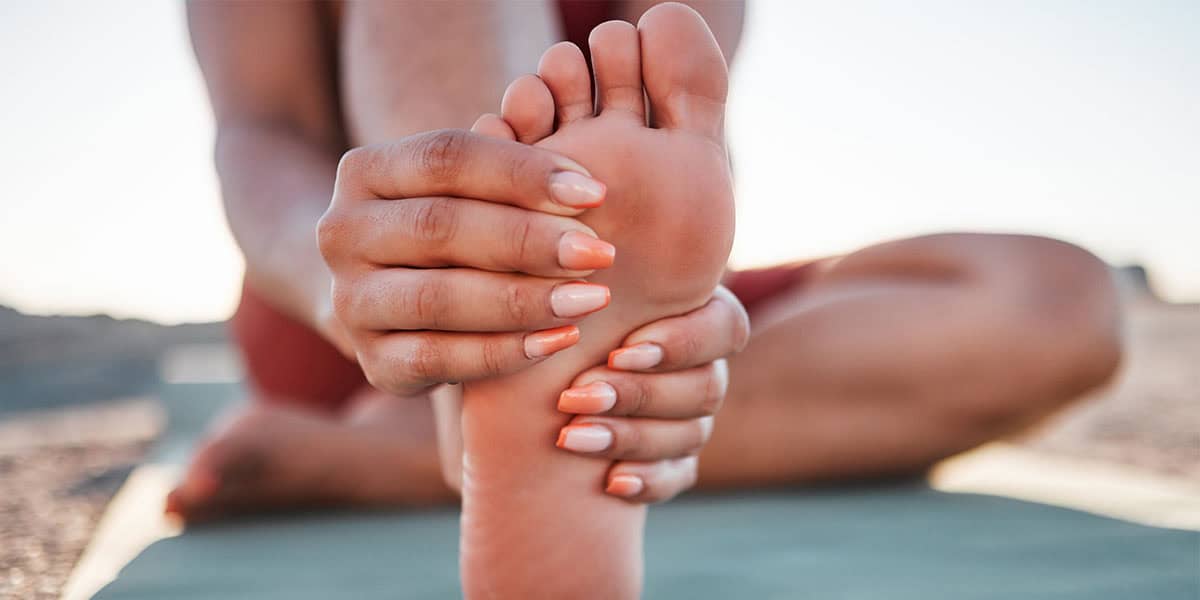 Listen Now
Could Feet Be the Windows to Your Health?
Read More
Listen Now
Could Feet Be the Windows to Your Health?
Read More
-
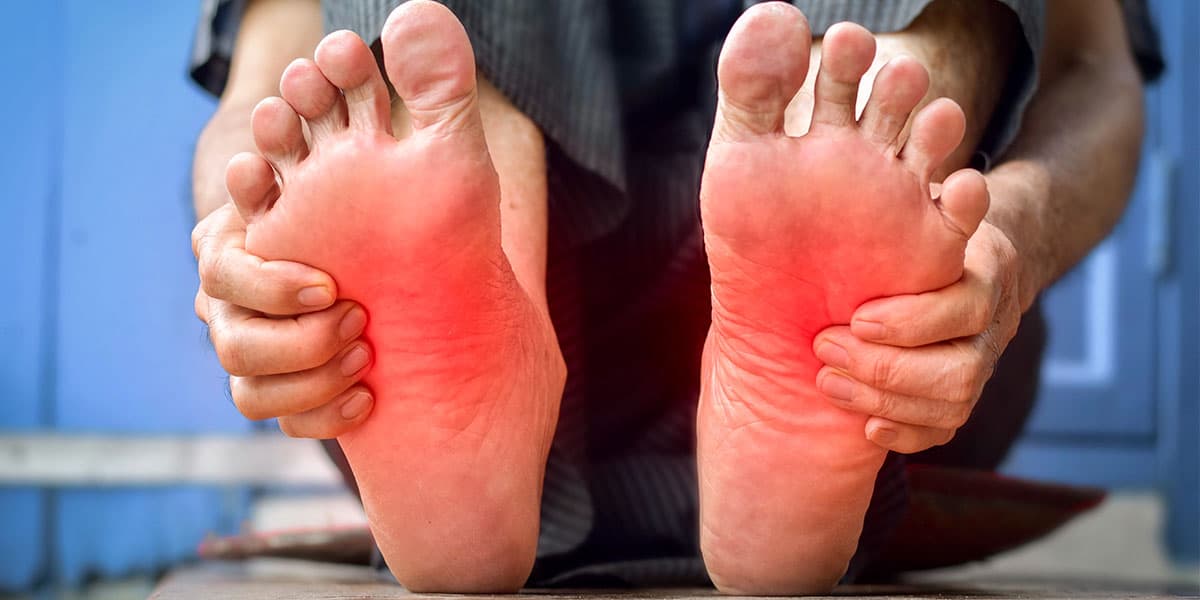 Listen Now
What Is Erythromelalgia?
Read More
Listen Now
What Is Erythromelalgia?
Read More
-
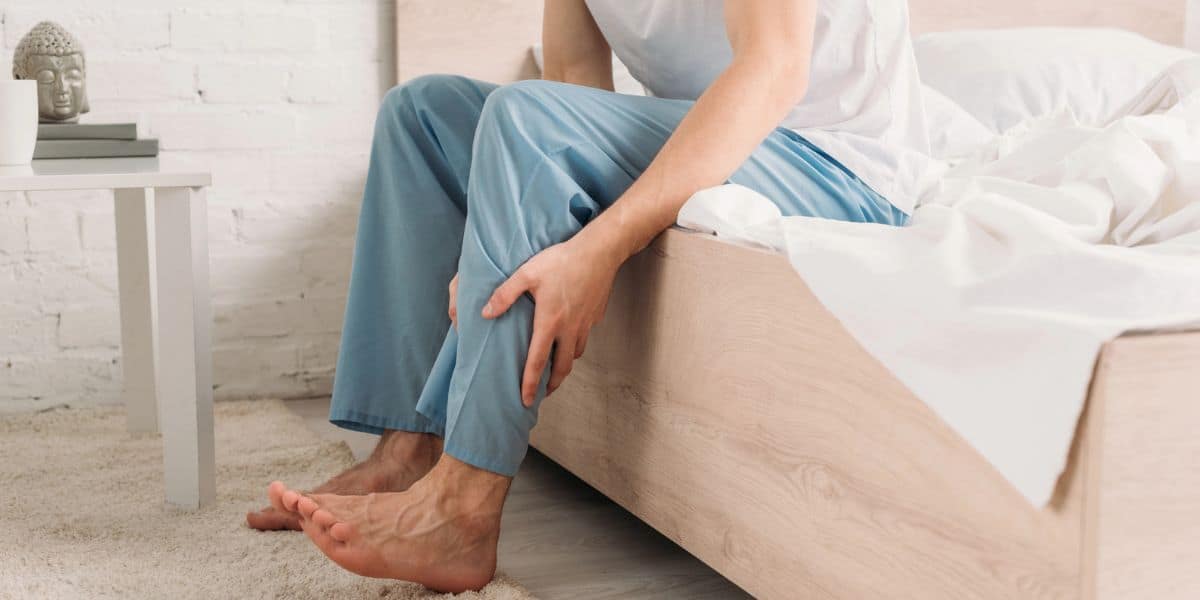 Listen Now
What Are Shin Splints?
Read More
Listen Now
What Are Shin Splints?
Read More
-
 Listen Now
15 Summer Foot Care Tips to Put Your Best Feet Forward
Read More
Listen Now
15 Summer Foot Care Tips to Put Your Best Feet Forward
Read More
-
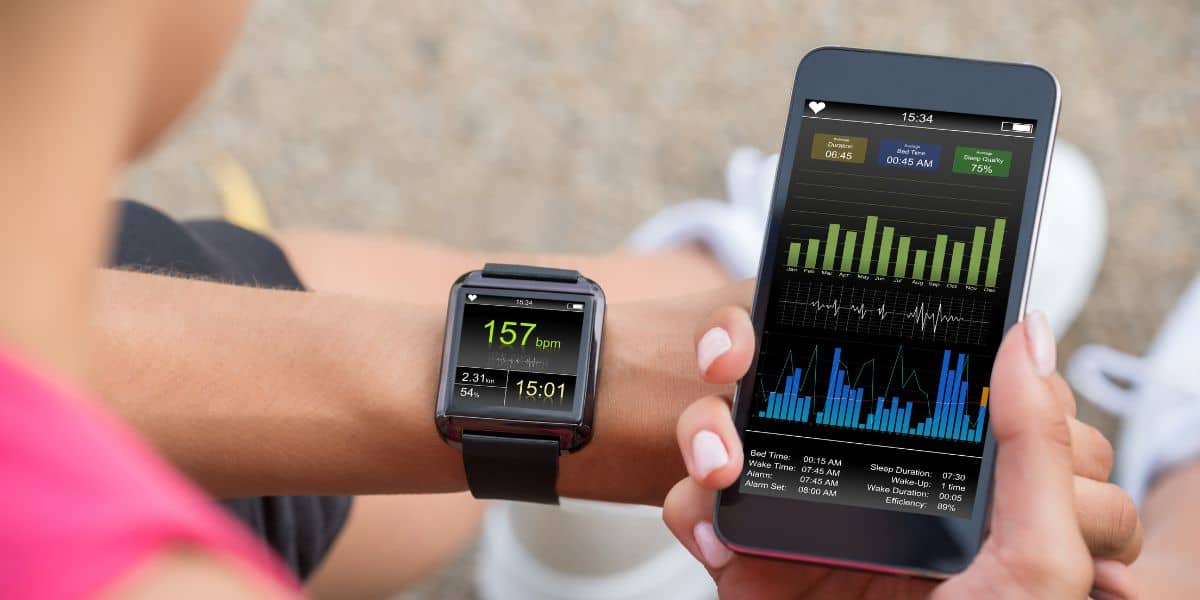 Listen Now
How Many Steps Do I Need A Day?
Read More
Listen Now
How Many Steps Do I Need A Day?
Read More
-
 Listen Now
Revealing the Secrets of Men's and Women's Shoe Sizes: Why Are They Different?
Read More
Listen Now
Revealing the Secrets of Men's and Women's Shoe Sizes: Why Are They Different?
Read More
-
 Listen Now
The Link Between Foot Health and Posture
Read More
Listen Now
The Link Between Foot Health and Posture
Read More
-
 Listen Now
Custom Orthotics vs. Over-the-Counter Inserts: Which Are Best for Your Feet?
Read More
Listen Now
Custom Orthotics vs. Over-the-Counter Inserts: Which Are Best for Your Feet?
Read More
-
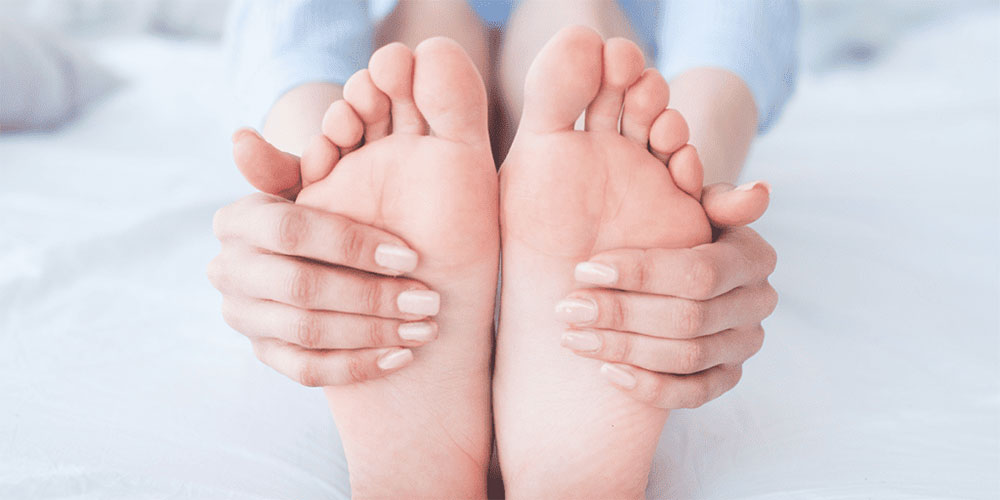 Listen Now
Why Are My Feet Different Sizes? It's More Common Than You Think
Read More
Listen Now
Why Are My Feet Different Sizes? It's More Common Than You Think
Read More
-
 Listen Now
Is Foot Analysis Better than Horoscopes? What Do Your Toes Reveal About Your Personality?
Read More
Listen Now
Is Foot Analysis Better than Horoscopes? What Do Your Toes Reveal About Your Personality?
Read More
-
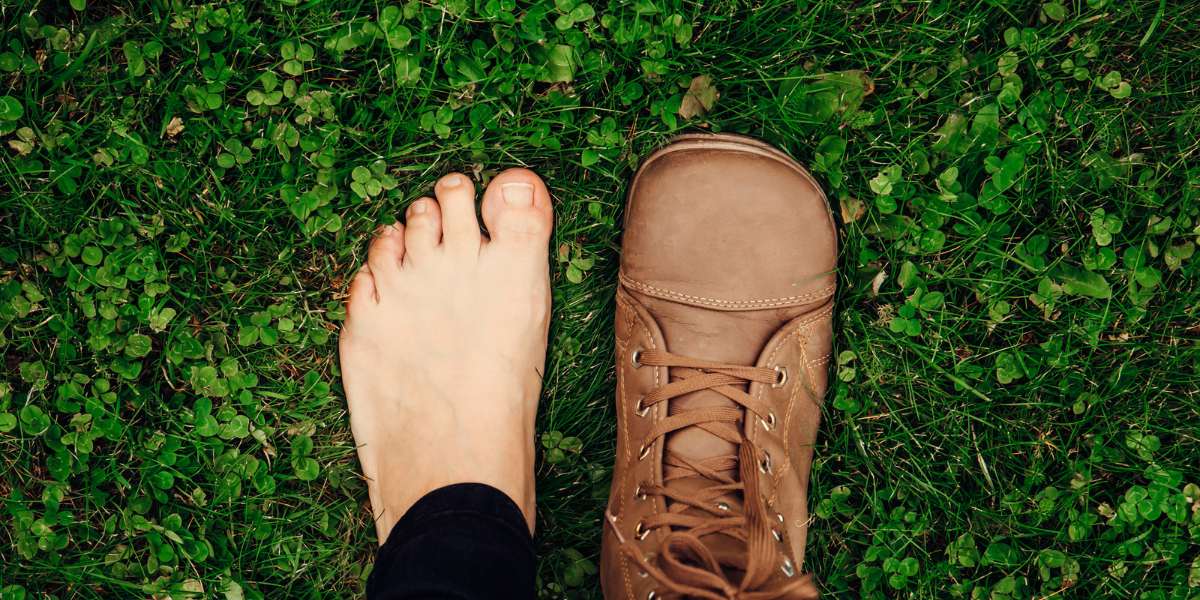 Listen Now
How To Tell If You Have Wide Feet
Read More
Listen Now
How To Tell If You Have Wide Feet
Read More
-
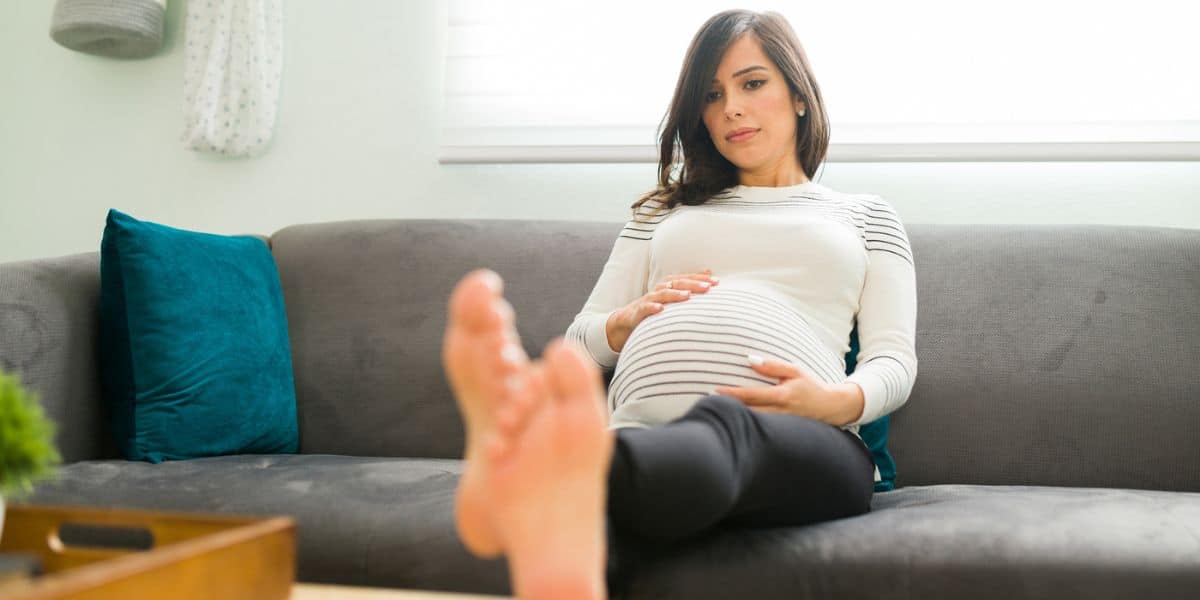 Listen Now
Swollen Feet During Pregnancy
Read More
Listen Now
Swollen Feet During Pregnancy
Read More
-
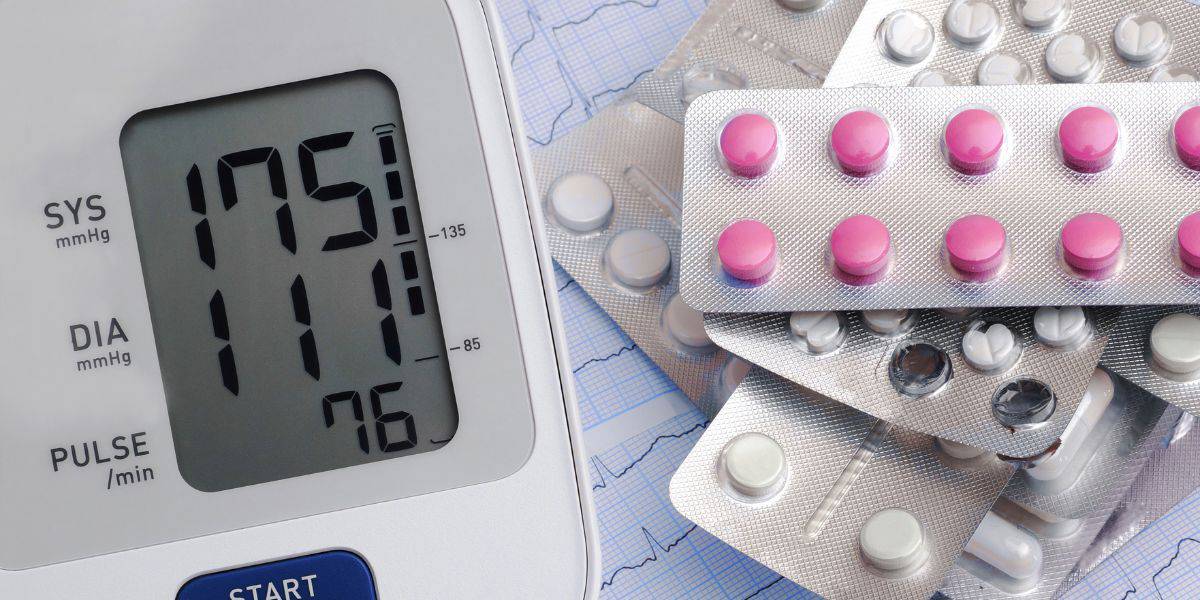 Listen Now
Do Blood Pressure Medicines Cause Foot Pain?
Read More
Listen Now
Do Blood Pressure Medicines Cause Foot Pain?
Read More
-
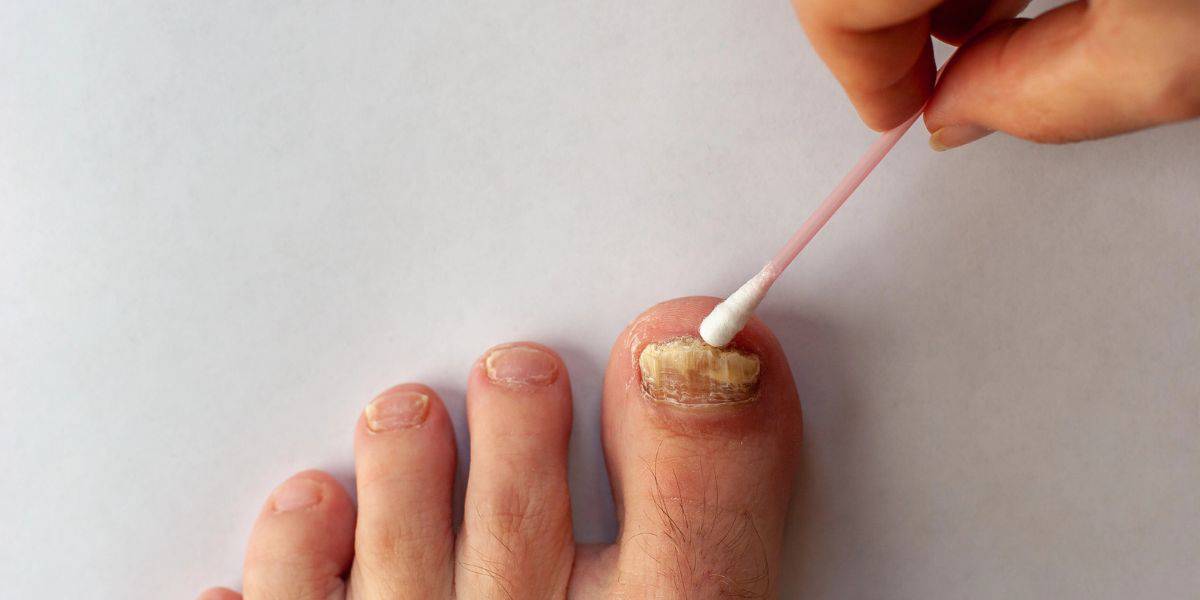 Listen Now
What To Do When Your Toenail Is Falling Off
Read More
Listen Now
What To Do When Your Toenail Is Falling Off
Read More
-
 Listen Now
Flip-flops Causing You Pain? Protect Your Feet This Summer!
Read More
Listen Now
Flip-flops Causing You Pain? Protect Your Feet This Summer!
Read More














